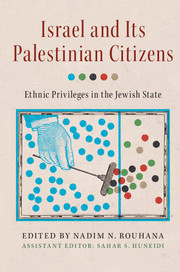Part III - Part
Published online by Cambridge University Press: 16 February 2017
Summary

- Type
- Chapter
- Information
- Israel and its Palestinian CitizensEthnic Privileges in the Jewish State, pp. 367 - 432Publisher: Cambridge University PressPrint publication year: 2017



